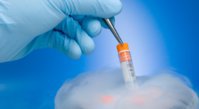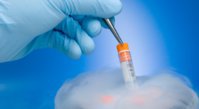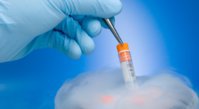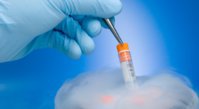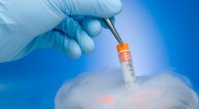Beschreibung
What is an embryo is a question we often get asked, basically it is a new organism within the early stage of development. In sexually reproducing organisms for example in humans, the embryo is the resultant single cell post fertilisation of a female egg cell by the male sperm cell. An organism in its initial stage of development ready to grow and differentiate, in humans from approximately the first week post fertilisation to the end of eighth week. The unborn baby beyond eight weeks is referred to as a fetus.
Embryos In Detail
Immediately when human fertilisation takes place, the embryo develops from a zygote the single cell resulting from the fertilization of the female egg cell by the male sperm cell. The zygote possesses half the DNA of each of its two parents. Cellular division begins and progresses at a fast rate. At just about four weeks the cell mass becomes a recognizable embryo, which measures around 7 to 10 millimetre long with rudimentary organs, normally at this stage of the embryo extremities such as the eyes and ears are seen. At the end of around 8-9 weeks the embryo should be a fully grown to approximately 2.5 cm, with head being a prominent part as a result of the fast development of the brain; the sex is distinguished at this stage too.
Embryo Development
The development of a zygote cell into an embryo happens through specific stages namely blastula, gastrula, and organogenesis. Blastula stage usually displays a fluid-filled cavity, the blastocoel, engulfed by a sheet of cells called as blastomeres. In humans the ovum/eggs are fertilised in the fallopian tube through which it reaches the uterus. An embryo is then referred to as fetus at a more advanced stage of development up until the birt
Cells from blastula stage undergo a complex process of cell division, invasion and/or migration to form two or three tissue layers scientifically referred to as diploblastic and triploblastic tissue layers respectively. The three tissue layers are called e
Embryos In Detail
Immediately when human fertilisation takes place, the embryo develops from a zygote the single cell resulting from the fertilization of the female egg cell by the male sperm cell. The zygote possesses half the DNA of each of its two parents. Cellular division begins and progresses at a fast rate. At just about four weeks the cell mass becomes a recognizable embryo, which measures around 7 to 10 millimetre long with rudimentary organs, normally at this stage of the embryo extremities such as the eyes and ears are seen. At the end of around 8-9 weeks the embryo should be a fully grown to approximately 2.5 cm, with head being a prominent part as a result of the fast development of the brain; the sex is distinguished at this stage too.
Embryo Development
The development of a zygote cell into an embryo happens through specific stages namely blastula, gastrula, and organogenesis. Blastula stage usually displays a fluid-filled cavity, the blastocoel, engulfed by a sheet of cells called as blastomeres. In humans the ovum/eggs are fertilised in the fallopian tube through which it reaches the uterus. An embryo is then referred to as fetus at a more advanced stage of development up until the birt
Cells from blastula stage undergo a complex process of cell division, invasion and/or migration to form two or three tissue layers scientifically referred to as diploblastic and triploblastic tissue layers respectively. The three tissue layers are called e
